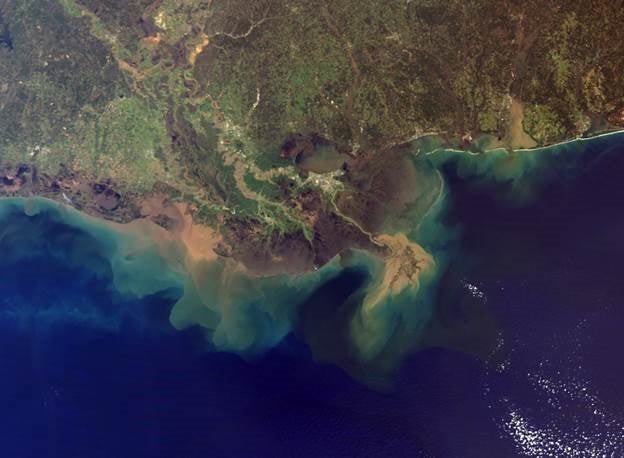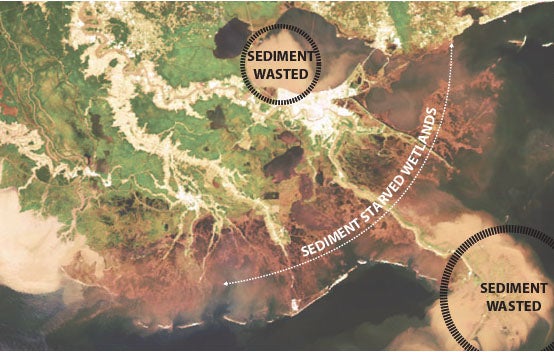 The Mississippi River Delta formed over the last 7,000 years as the Mississippi River carried sediment accumulated from all over North America and deposited it at the mouth of the river—along what is now Louisiana’s coastline. When enough sediment stacks up under water, plant communities begin to thrive and develop, encouraging new sediment to accumulate until new land is formed.
The Mississippi River Delta formed over the last 7,000 years as the Mississippi River carried sediment accumulated from all over North America and deposited it at the mouth of the river—along what is now Louisiana’s coastline. When enough sediment stacks up under water, plant communities begin to thrive and develop, encouraging new sediment to accumulate until new land is formed.
Sediment Issue
Louisiana’s land loss crisis is due to a number of factors, but the leveeing of the Mississippi River disrupted this natural cycle. Now the sediment that once built this land is lost into the deep water of the Gulf of Mexico.
While some sediment does escape where the levees end (on the east side of the river and at the Birdsfoot Delta), most of the mud and sand bypass the marshes that desperately need it, including Barataria Bay and Breton Sound. In order to capture and fully reap the benefits of all the sediment that the river carries, both marsh creation and sediment diversion projects need to be employed in the best locations possible.
Nearly 90 million tons of sediment pass by the city of Belle Chasse, La. each year. This is sediment that could be used to replenish the areas where effects of land loss are becoming more and more evident.
“To restore the health and vitality of the Mississippi River Delta and coastal Louisiana not only now, but for years to come, it is vital that all of the sediment is treated like the precious resource it is and every effort is made to maximize its capture for coastal restoration,” says Alisha Renfro, staff scientist with the National Wildlife Federation. “The sand and mud carried by the Mississippi River and its tributaries is the foundation and the lifeblood of the delta.”
